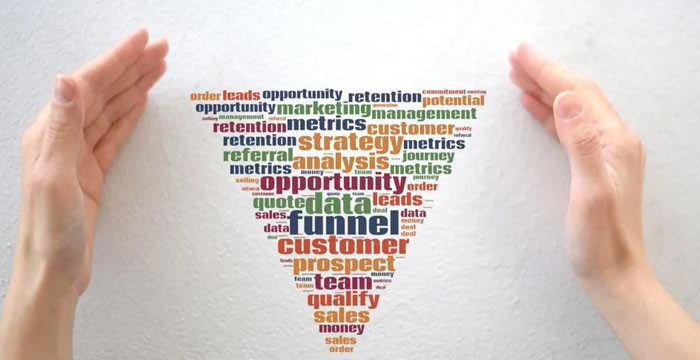Table of Content
These days, social media is vital to building and maintaining a brand and its customer relationships. On the other hand, it is essential to have a specific strategy in place for converting site visitors into paying customers.
On the other hand, it is essential to have a specific strategy in place for converting site visitors into paying customers.
The social media funnel is the model that helps users navigate the path from awareness to conversion. With a clear understanding of every level of this funnel, brands can significantly improve their marketing results.
How Does the Social Media Funnel Work?
The social media funnel captures the prospective buyer's journey and highlights the point of interaction with the brand versus the purchase. It generally has three key components:
- Awareness: This phase is the initial stage where users come into contact with your brand.
- Engagement: This is where users engage with your content, showing they care about the information and are forming an interest.
- Conversion: The final stage where leads convert into clients and take the required action.
Meeting these targets creates an efficient path that turns visitors into customers.
Stage 1: Awareness – The Goal Is Recognition

At this stage, people notice the brand but don’t take any action. If users are unaware of what you offer, visibility is the key focus. The goal is to grab their attention using appealing marketing content.
Influencer marketing helps boost sales. Companies earn $5.78 for every $1 spent on influencer marketing.
Brand awareness can also be achieved through social media advertising, especially using Facebook and Instagram ads, which allow hyper-targeting based on demographics and interests.
Short-form videos and memes, often labeled as 'viral' content, play a crucial role in brand recognition. Creating and promoting such content accelerates brand exposure.
Platforms like Instagram, TikTok, and Twitter (X) amplify brand awareness by hosting highly shareable posts that can quickly go viral.
Stage 2: Engagement - Relationship Building

After making potential customers familiar with the brand, engagement is essential to maintain their interest and build trust. Engagement serves as a clear indicator of possible conversions, as users who actively engage are more likely to make purchases.
Effective Engagement Strategies:
- Encourage Conversations: A prompt response to comments and messages is a characteristic of brands that have high engagement rates. One in four buyers would rather use social media sites than search engines when looking for brands.
- Offer Valuable Content: Educational posts, how-to guides, and user-generated content enhance credibility and keep audiences engaged.
- Use Polls and Q&A Sessions: Interactive content boosts engagement rates and helps brands understand their audience better.
Stage 3: Conversion—Monetizing Engagement

At this stage, leads are converted into paying customers. Success hinges on the user experience and strong calls to action.
Best Methods for Increasing Conversions:
- Optimize Your Website and Landing Pages: Mobile-optimized websites have a 67% higher conversion rate, according to Google.
- Leverage Social Proof: Testimonials and reviews strongly influence purchasing decisions. According to the findings of a study conducted by BrightLocal, 82 percent of shoppers are more inclined to make a purchase after reading good evaluations.
- Use Retargeting Advertising: Ads on Instagram and Facebook help recapture the interest of users who previously engaged but didn't convert.
- Deliver Exclusive Promotions: Deals and discounts that are only available for a limited time generate a sense of urgency and motivate rapid action.
- Enable Seamless Purchases: Platforms like Instagram and Facebook offer built-in shopping features that streamline transactions.
The Importance of Analytics in Enhancing Funnel Performance
To improve overall performance, measuring and tracking key metrics at each funnel stage is crucial. These KPIs include:
- Awareness: Social media followers, reach, and impressions.
- Engagement: Content interactions, comments, and video participation.
- Conversion: Sales, lead generation, and click-through rate (CTR).
Tools like as Google Analytics, Facebook Insights, and Instagram Analytics may be used by brands in order to assess the performance of their initiatives and improve them accordingly.
Conclusion
A well-structured social media funnel helps brands focus their marketing efforts, ensuring they reach the right audience at the right time. By strategically aligning awareness, engagement, and conversion, businesses can maximize their ROI and long-term success.
Subscriberz specializes in increasing follower count and boosting social media engagement. Brands and advertisers looking to scale their social media presence can benefit from these efficient services.
In today’s competitive digital landscape, having a meticulously designed funnel is essential for sustained growth and success.
Sources:
https://thriveagency.com/news/a-detailed-breakdown-of-the-social-media-conversion-funnel/


